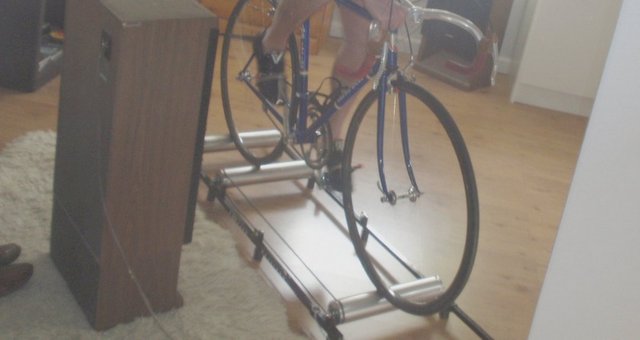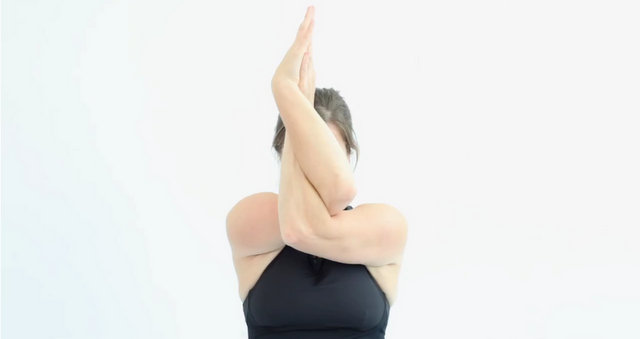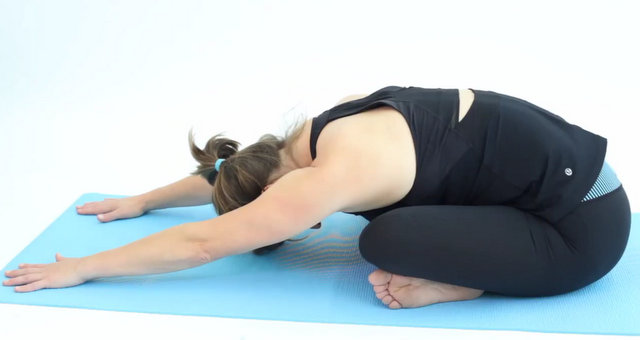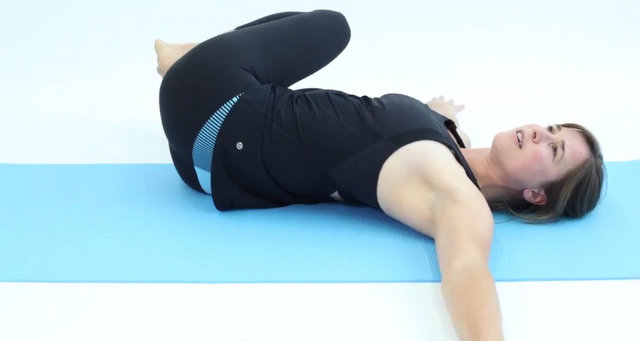Every month, Lucy Fry, a London-based Personal Trainer guides you through a different resistance training exercise off the bike, to help you improve your performance on the bike.
Introducing the press up
What is the press up?
Sometimes it’s the oldest moves that are the best. And so it is with the press (or ‘push’) up; an upper body and core strengthening movement that will also get you out of breath and – most brilliantly of all – can be done anywhere, anytime.
Get down, now, and give me twenty!
Why cyclists need a little press up in their lives
I’ve said it before and I’ll say it again. Core strength is really important for cyclists as they stay in one position for ages, so therefore we need to keep the back supported. For mountain bikers who are riding bumpy trails, press ups are particularly good as they train the arms to be strong and reactive, so that the back won’t have to take quite so much pressure.
How to: Press up
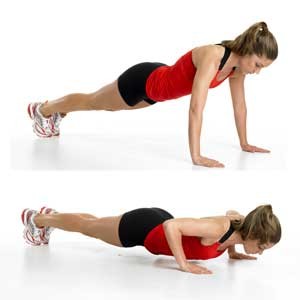
- Lie on the ground with your palms facing down, hands close to you with thumbs almost tickling your armpits
- Push through the palms, causing your body to raise up off the floor in a straight line, but don’t let the back cave in
- Then lower back down, so that your chest as near as possible touches the floor, and go up again
- If you need to remain on the knees just be sure that you keep the back straight, even though it’s in a diagonal position.
How many times and for how long?
Unless you can do lots of press ups in a row, in which case press ups become more of a general conditioning or warm up movement, this will be a strength exercise. So try 6-8 really good repetitions, chest to the floor with a straight back and abs switched on, ideally at a tempo of 3-counts down, 1-count up.
Rest 2 minutes in between sets. Perform 4 sets.
Variations (easier and harder)
Easier: If you haven’t already trained with press ups, chances are you’ll need to begin on your knees and then graduate to doing them on your feet. It’s much better to do them properly on your knees first, rather than badly on the feet.
If you’re able to do a few, but not all on the feet, either go back to the knees to finish the set off. Go very slowly all the way down to the floor, before ‘collapsing’ on the ground, resetting and starting again. This trains that biting point as your chest hits the floor, so you’ll soon be able to push back up.
Harder: Once you can do four sets well, at tempo, on the feet, then you can try placing your hands at diagonals and switching positions every repetition. Don’t worry about tempo, just try a bouncing movement, or even try clapping in between.
What does the press up work?
The press up is primarily an upper body pushing movement, so, like a chest press or bench press, uses the pectorals (chest muscles), triceps (back of arms) and shoulders. However, because you’re parallel to the ground, effectively in a plank position during this movement, it also requires, and builds, core strength.
Why the press up is good for life
Let’s face it. You never know when some annoying person at a dinner party is going to say something disparaging about women’s strength, and you’ll be required to demonstrate ten perfect press-ups in protest. But even if you’re lucky enough not to come into contact with such unfortunates, the press up remains an excellent all-round strength and fitness tool that can help build core strength and sexy triceps.
Can I do press ups at home?
All you need is some floor space as big as your body. Enough said.
Lucy’s top tips for press ups
- Lots of people do press ups out wide – arms half a foot away from the shoulders – but that’s not particularly functional, so I always train people to keep them close to the body, which also builds more tricep strength and is generally tougher.
- Squeeze the abdominals a bit, and tighten the gluteal muscles as you press up. This will help you to maintain good form and get that last rep out.
- Place your phone or similar on the floor and ensure you hit it – or as close as possible – with your chest on every repetition.
Lucy Fry’s strength training for cyclists
Lucy Fry is a London-based Personal Trainer working on a freelance basis at the Central London training studio, Club 51.
For personal training queries, please email: [email protected]


